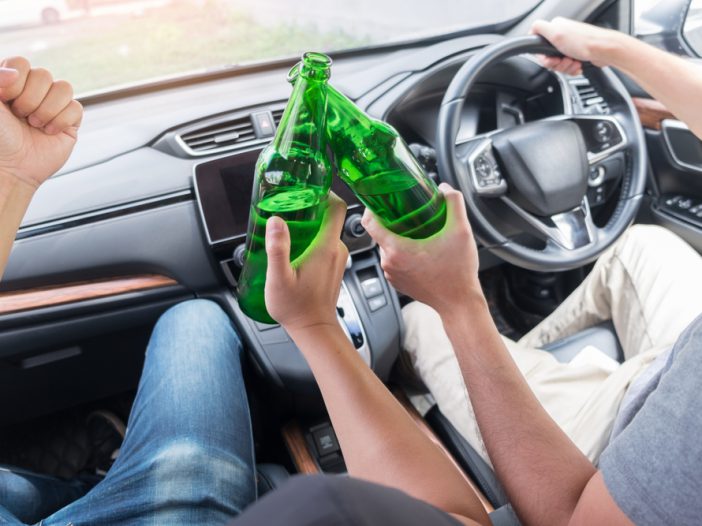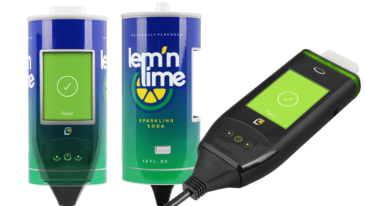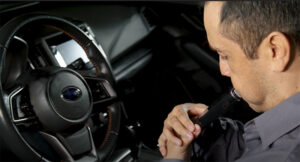
How to Prevent Your Teen From Driving Drunk
Although the drinking age in the United States is 21, the reality is that many teens get access to alcohol before then. The thrill of liquor for a teenager is as alluring as it is dangerous. And according to the CDC, “1 in 10 teens in high school drinks and drives.” This number is staggeringly high, especially when you consider the incapacitating effects of alcohol combined with the inexperience of young drivers.
When an individual gets behind the wheel under the influence of alcohol, they are a hazard to themselves and everyone around them. And as a parent, it’s hard enough to deal with your teenagers’ newfound sense of independence. To think that now you have to worry about alcohol and alcohol-related driving incidences is enough to keep any parent up through the night. And though you could take the extreme precaution of installing a car breathalyzer in your teen’s vehicle, it would prove more beneficial to make sure they are informed about the risks of driving while intoxicated. Thus, it is critical you do everything in your power to educate your teen and prevent them from drinking and driving. Even if that means opening the doors to some uncomfortable conversations.
Teen Drunk Driving Statistics
Although the number of teens driving drunk on the road has decreased over the years, teenage drunk driving is still a significant issue. The following are teenage drinking and driving stats published by the CDC:
- People in the 16-20 age group are “17 times more likely to die in a car crash when they have a blood alcohol concentration of .08% than when they have not been drinking.” Even if your teen is at the legal driving limit for adults, they should never get behind the wheel of a car.
- Teen drivers are three times likelier than more experienced drivers to be in a deadly crash when alcohol is involved. This risk rises exponentially with an increasing BAC. Which makes sense, driving is a complex task that requires excellent motor skills and quick decision making. New drivers have yet to fine-tune these skills sober, let alone while under the influence of alcohol.
- “85% of teens in high school who report drinking and driving in the past month also say they binge drank. In the survey, binge drinking was defined as having 5 or more alcoholic drinks within a couple of hours.” Binge drinking means a sharper spike in BAC, resulting in diminished motor skills and poor judgment.
- “1 in 5 teen drivers involved in fatal crashes had some alcohol in their system. Most of these drivers (81%) had [BACs] higher than the legal limit for adults.”
Every parent’s worst fear is getting a call that their child has been involved in a car accident. Hearing that there was teenage drunk driving involved makes it that much more of a nightmare.
Laws in Place
Legislation is one measure of prevention when it comes to teen drunk driving. Due to new regulations, like the change to the minimum legal drinking age in 1984, fewer teens are getting on the road intoxicated.
Minimum Legal Drinking Age
The Minimum Legal Drinking Age Law, or MLDA, specifies that only people who are over 21 years old can buy or publicly consume alcohol. This law is an excellent preventative measure put in place to stop teens from drinking and driving.
The minimum legal drinking age…
- Decreases car accidents – According to the CDC, when the law first came into play, states that increased the legal drinking age to 21 saw a “16% median decline in motor vehicle crashes.”
- Protects people – There’s evidence that in the long term, this law protects people from alcohol and other drug dependence, adverse birth outcomes, suicide, and homicide. It also dramatically reduces deaths due to teen binge-drinking and alcohol poisoning. Plus, with less young, intoxicated drivers, the roads are safer for everyone.
The best way to promote safe driving and ensure these laws are enforced is to be active in your community. When areas collectively agree to crack down on the legal drinking age, it is much more successful. Another way that laws have decreased the number of drunk teens on the road is with zero-tolerance laws.
Zero-Tolerance Laws
When you first get your license, you must follow specific rules that tell you who you can have in your motor vehicle while driving and what hours of the day you can be on the road. Zero-tolerance laws apply to provisional drivers as well as anyone who is under 21. These laws differ from state to state.
For example, in California, the DMV states that the Zero Tolerance Law makes it illegal to drive with a blood alcohol content of “.01% or higher if you are under 21 years of age.” On your first offense, your license will be suspended for one year if:
- Your blood alcohol content is .01% or higher
- You refuse to take the preliminary alcohol screening (PAS) test
- You fail the PAS test
Zero-tolerance laws inform teens that there will be consequences for driving while intoxicated regardless of how much they drink. It is a matter of public health to prevent teens from drinking and driving, and these laws will make them think twice about the consequences of their actions.
PAS Test
The PAS test is a “hand-held breath-testing unit that gives an instant and accurate measure of your blood alcohol concentration.” For individuals under 21, you are considered impaired with a BAC of .01% or more. It is illegal and dangerous for teens to be on the road with any alcohol in their system, which the zero-tolerance policy reinforces.
Graduated Driver Licensing
New drivers are in a classification called Provisional Licenses. Graduated driver licensing (GDL) programs give young people driving experience while still limiting their driving privileges. GDL programs usually consist of 3 stages:
- Learner Stage – supervised driving with a driving test needed to gain independence
- Intermediate Stage – limited unsupervised driving
- Full Privilege Stage – a standard driver’s license
There are also GDL Laws that vary state by state. For example, some states prohibit cellphone use and night driving for new drivers. In most states, GDL laws also restrict the number of passengers allowed in the vehicle before receiving full driving privileges.
What Can Parents Do?
As a parent, you want to do everything you can to keep your child safe. To prevent your teen from putting themselves at risk, education and communication are critical.
Face the Reality
The teenage years can be a tricky time when it comes to the relationship between parent and child. High school is a time filled with confusion, experimentation, and rebellion.
No one wants their teen driving drunk. To prevent it, you must first come to terms with the fact that a lot of teens actively seek out alcohol and do not stumble across it. By being open and honest with your teen about the realities of the situation, then you can become proactive about preventing dangerous situations.
Start the Conversation
The next step is to open up a dialogue with your teen about alcohol and driving under the influence. It’s important to maintain mutual respect and open communication during these conversations, rather than a one-sided lecture.
Communicate With Your Child’s Doctor
If you have concerns about your child’s safety in relation to drinking and driving, your doctor may be able to help. Doctors can provide insight and education for both parents and teens on the realities of teenage drunk driving facts and statistics. They’re also educated on helpful programs that can prevent your teen from an underage DUI.
Foster Mutual Respect
Let your child know that regardless of how you feel about them drinking, their safety is what is most important. Emphasize that you are on their side. Rather than threatening punishment, explain that rules are in place for their protection and the safety of everyone around them.
One technique is to assure your child that if they are in an unsafe situation and need a ride, you will always be there to pick them up. It might go without saying, but reinforcing that you are there for them could be what makes your teen think twice about driving drunk.
Consequences
Educate your teen on the health risks associated with alcohol consumption, especially during early development. Statistics and cautionary stories are a great tool in prevention. Here are a few examples:
- According to Mothers Against Drunk Driving, or MADD, “car crashes are the leading cause of death in teenagers,” and “1 in 4 car crashes with teenagers involve an underage drunk driver.”
- Research has shown that “young people who begin drinking before age 15 are four times more likely to develop alcohol dependence than those who begin drinking at age 21.” Consuming alcohol from a young age can have severe long-term consequences, and they should be aware of that.
- “In 2013, there were approximately 119,000 emergency room visits by persons aged 12 to 21 for injuries and other conditions linked to alcohol” (CDC). Teenagers can feel indestructible. These statistics may influence them to use precautions.
Other consequences listed by the CDC that you should share with your teen include:
- School problems – Alcohol use can lead to problems in school like higher absence rates and poor or failing grades. Education is a crucial tool for gaining different perspectives on the world and ultimately, finding a good job. Failing school has a ripple effect that makes many aspects of life more difficult.
- Emotional problems – Another consequence of underage drinking is how it affects the brain at such a young age. Up until age 25, the brain is developing. And in the teenage years, hormones that regulate growth and mood, are flooding the body. Alcohol passes straight through the blood-brain barrier and suppresses this development. This can lead to irrational mood swings and psychological problems.
- Legal problems – There are severe legal consequences for underage drinking. A DUI received under the age of 21 comes with fines, revocation of license, and more. Plus, if someone is physically hurt while the teen driver is drunk, this can lead to jail time and lifelong consequences.
- Physical problems – Alcohol can lead to physical issues like the disruption of healthy growth, sexual development, and other illnesses. Changes in brain development can have life-long consequences like memory problems. Make sure that your teen understands that drinking can cause them real physical harm.
- Death – Teenagers are more likely to binge drink, which can lead to alcohol poisoning, and in the worst-case scenario, be fatal, causing death. Alcohol also puts teenagers at a higher risk for depression, mental illness, and suicide.
Resources
Talk to your teenager about people who have been impacted by underage drinking and driving. Mothers Against Drunk Driving, or MADD, is one great resource to assist parents in alcohol prevention.
MADD is an online platform that provides a library of information on the dangers of drinking and driving, complete with statistics and stories from the victims. On their website, under Teen Drinking, you can:
- Request a presentation – MADD has offices all around the USA, and upon request will give underage drinking presentations. These are thorough talks that advocate for prevention.
- Find an advocate – If someone you love has been killed or injured by underage drinking, MADD can connect you with an advocate that will provide information and assistance.
- Get tools – MADD designs toolkits for parents that help you to prevent underage drinking and promote safe driving in your community. These are educational handbooks that make it easier to get involved.
- Find parent resources – MADD also has resources to help parents talk to their teens about the potential consequences of drinking alcohol. Starting the conversation is the first step.
- Voices of the Victims – Another heart-wrenching aspect of MADD is its victim stories. These emotional tales talk about the day their lives changed forever due to drunk driving fatalities. It is hard to read, but sharing these stories with your teenager is a way to prevent them from ever getting behind the wheel while under the influence and avoid fatal accidents.
What Can Teens Do?
When looking at the prevention of underage drinking and driving, it comes down to the decisions your teen is making. To set them up for success, talk about strategies that they can use in tricky situations. For example:
- Always have an exit strategy or a ride home planned in advance
- Never ride in the car with an underage driver who has been drinking
- Call parents for a ride when necessary
- Don’t let friends drive drunk
Underage drinking and driving is a serious issue that must stop. Sit down with your teen and start the conversation early to prevent any more people from getting hurt due to teen drunk driving.
Sources:
https://www.ghsa.org/state-laws/issues/teen%20and%20novice%20drivers
https://www.cdc.gov/vitalsigns/teendrinkinganddriving/index.html
https://www.dmv.ca.gov/portal/dmv/?1dmy&urile=wcm:path:/dmv_content_en/dmv/teenwe
https://www.cdc.gov/alcohol/fact-sheets/minimum-legal-drinking-age.htm
https://www.drugfreeworld.org/drugfacts/alcohol/understanding-affects-on-body.html
https://www.cdc.gov/alcohol/fact-sheets/underage-drinking.htm


